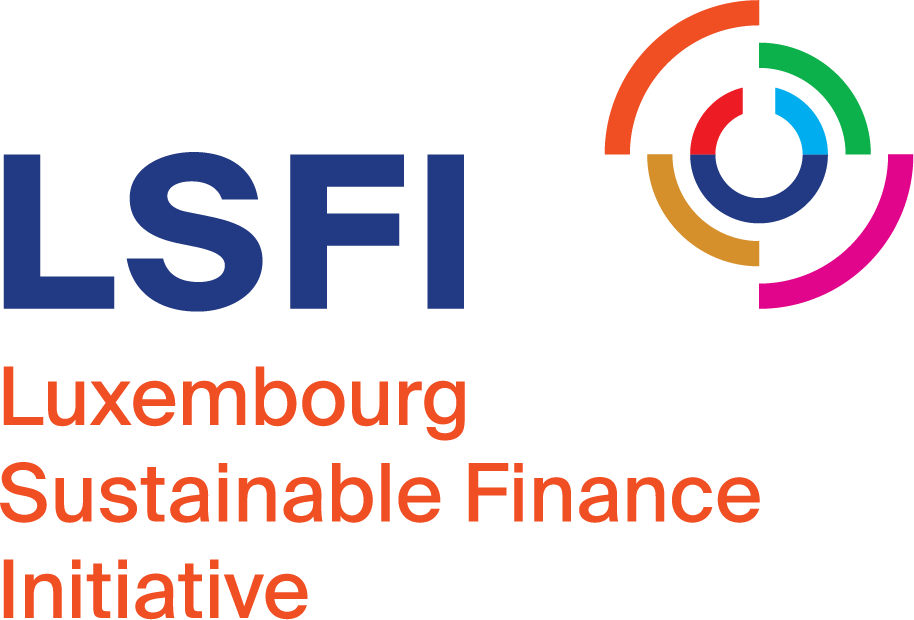We started the year wondering what 2022 may hold in store for the sustainable finance landscape in Luxembourg. Surely, the EU regulations will be a booster for sustainable finance, but how to implement it properly and how it will be supervised, will be key topics.
To give you some insight, we had the pleasure to discuss with Claude Marx, Director General of the Luxembourg Commission de Surveillance du Secteur Financier (CSSF). He shared with us his views on how the regulation will help reorient capital flows, how the CSSF is helping the sector adapt to these new regulations, how it is gearing up and his main advice to the Luxembourg financial sector.
LSFI – The EU Action Plan for financing a sustainable growth was published in 2018. What is your view on what has been achieved so far?
Claude Marx – The ambitious EU action plan is slowly triggering a reorientation of capital towards sustainable investments. For instance, EFAMA figures show that by the end of Q1 2021, asset managers in Europe have applied an ESG approach to approximately EUR 11 trillion of assets.[1] (For further information, see also PWC Report Luxembourg Top Destination for EU-domiciled ESG Mutual Funds[2].)
Although reorientation is still timid at this stage, we can all agree to say that the one thing that has been achieved so far is a consensus throughout Europe that the shift of capital flows towards more sustainable activities is an absolute necessity in order to address the detrimental effects of climate change and an understanding that in order to achieve this, there needs to be a common and continuous effort.
The implementation of the concrete measures of the action plan will be gradual, but the effects on climate change will probably be visible only for future generations.
Read more about the European Commission’s “Financing Sustainable Growth” action plan (2018)
- Reorient capital flows towards sustainable investment
- Establish an EU classification system for sustainability activities
- Create standards and labels for green financial products
- Foster investment in sustainable projects
There are four main legislative proposals
1. Taxonomy Establishes the conditions and the framework to create, over time, a unified classification system (or taxonomy) on what can be considered environmentally sustainable economic activities. Essential to channel investments into sustainable activities.
2. Disclosure and duties Introduces obligations on institutional investors and asset managers to disclose how they integrate ESG factors into their risk processes. Requirements to integrate ESG factors in investment decision-making processes, will be specified through delegated acts.
3. Low carbon benchmarks Introduces new category of benchmarks, comprising low-carbon and positive carbon impact benchmarks into existing Benchmarks Regulation, to help investors better understand the relative carbon impact of their investments.
4. Sustainability Preferences The Commission has solicited feedback on amendments to delegated acts under the Markets in Financial Instruments Directive (MiFID II) and the Insurance Distribution Directive to include ESG considerations into the advice that investment firms and insurance distributors offer to their clients. Since then, Commission Delegated Regulation (EU) 2021/1253 of 21 April 2021 amending Delegated Regulation (EU) 2017/565 as regards the integration of sustainability factors, risks and preferences into certain organisational requirements and operating conditions for investment firms and Commission Delegated Directive (EU) 2021/1269 of 21 April 2021 amending Delegated Directive (EU) 2017/593 as regards the integration of sustainability factors into the product governance obligations have been published.
Source: EC website and UNEP FI
LSFI – You are openly supportive of the EU sustainable finance regulation. One of its main goals is to “reorient capital flows towards a more sustainable economy”. How much of this “reorientation” has been achieved so far and what could be improved?

Claude Marx, Directeur CSSF – Photo: Guy Wolff/CSSF
Claude Marx – When speaking of reorientation of capital flows, this cannot be achieved overnight as it is a gradual transition. This transition is well underway, driven by consumer demands and supported by the European legislation.
A change of mind is noticeable with the professionals of the financial sector, who strive to adjust to and prepare for the new requirements.
Players have actively started to implement new legislation such as SFDR and Taxonomy. Some have already shifted their priority from avoiding or limiting risks associated with unsustainable investments to integrating sustainable investments in their business strategy.
Given the significant volumes traded in Luxembourg, notably investment funds and bonds listings, and the financial sector’s supporting expertise, this reorientation will gain momentum but can only be perfected over time.
In order to work out, this whole legislative framework, aiming ultimately at the reorientation of capital flows, must indeed be implemented at an early stage (even in the absence of level 2 texts as for SFDR for example) and may need to be adjusted or complemented during the course of action. High quality, standardised, comparable, comprehensive and reliable information, both on an entity’s financial performance and on an entity’s impact, are of utmost importance and a crucial starting point.
Indeed, we already note that at this stage, there are too many different reporting standards and frameworks, some of which are high-level, others voluntary, resulting in potentially misleading, inconsistent and non-comparable information. There is thus a need for additional measures to facilitate the availability of high-quality data at the level of investee companies to ensure that financial institutions are put in a position to fully comply with their reporting obligations. In this context, we notably welcome the additional legislative measures introduced by the Corporate Sustainability Reporting Directive (CSRD) that will be adopted in H1 2022.
In order to keep the investors’ confidence in this new effervescent framework and to incite them to invest in green products and to actively contribute to the reorientation of flows, they must absolutely be protected from greenwashing and its detrimental effects. They should and will indeed see the availability of high-quality ESG data as a given right before making an investment decision. The information they are provided with should be clear and not misleading, as well as adapted to their needs to enable them to opt for a service provider presenting a defined ESG profile or to enable advisors and other professionals to provide suitable advice or portfolio management satisfying appropriate ESG criteria.
LSFI – How do you see the role of the CSSF in supporting the transition of the Luxembourg financial sector towards sustainable finance?
Claude Marx – As you are well aware, the Luxembourg Government has published in 2018 a Roadmap for Sustainable Finance, which constitutes an extensive declaration of intent aiming at integrating sustainable finance into all areas of the financial sector.
In line with this political commitment of the Government, the CSSF is inscribing its supervisory actions in the strong will of not only national, but European initiatives. The CSSF is thus supporting the transition of the Luxembourg financial sector towards sustainable finance by including ESG issues in its supervisory strategy, as well as daily supervision.
The CSSF may indeed play a determining role in preparing the financial sector for the impact of the new European legislations, as well as inspiring and accelerating its general reorientation with the aim of preserving conditions for financial stability and ensuring that Luxembourg’s financial services industry remains competitive.
How is this done concretely?
The CSSF’s integrates ESG risk assessments, ESG governance considerations, ESG advisory procedures and other relevant internal processes of supervised entities into its own prudential supervision for all market participants within the scope of its supervision.
This integration happens through:
– proactive measures consisting in the concentration of its efforts around support, guidance, awareness-raising and education. (1)
Read more about proactive measures
- the CSSF’s guiding market participants in the implementation of new European rules, such as those on transparency on sustainable investments and sustainability risks resulting from Regulation (EU) 2019/2088 on sustainability-related disclosures in the financial services sector (SFDR).
- the CSSF’s confirming, through communications the application dates of the SFDR or addressing the regulatory requirements and fast track procedure in relation to SFDR to investment fund managers of UCITS and AIFs.
- the Circular CSSF 21/773 on the Management of Climate-related and Environmental Risks increases awareness of members of the management body and credit institutions’ staff about these risks.
- the putting into place of a fast track procedure on taxonomy (Regulation (EU) 2020/852 on the establishment of a framework to facilitate sustainable investments (the “Taxonomy Regulation”) requiring financial market participants to provide disclosures in their pre-contractual documentation in respect of investments which contribute to one or more environmental objectives under article 9 of the Taxonomy Regulation.
- the CSSF’s supervision of listed companies in the preparation of their non-financial statements, in particular by issuing best practices and recommendations.
– reactive measures by making the implementation by supervised entities of the European legislation in sustainable finance matters a supervisory priority. (2)
(2) In this regard, the CSSF has the possibility to make the implementation, by supervised entities, of the European legislation in sustainable finance matters, a supervisory priority.
In this context, it should be highlighted that the CSSF considers ESG related risks, especially climate risks, as one of the major threats to financial resilience, financial market stability and market growth. It is a priority for the CSSF to make sure that the financial sector develops resilience to these risks, which may impact all sources of financial risks, in order to avoid that they become material.
While continuing its proactive approach, consisting notably in clarifying, at a sufficiently early stage, its expectations concerning climate-related and environmental risks, the CSSF will also actively develop a supervisory process to manage and assess those climate-related and environmental risks.
The CSSF currently helps to elaborate a methodology to assess this type of risks consisting not only to shift towards a more forward-looking approach and to extend supervision beyond a 3 to 5 year business cycle, but has also joined the movement of other supervisory authorities to develop climate change stress tests. The CSSF will thoroughly monitor the results of these tests in the near future and adapt its supervisory response.
LSFI – How is the CSSF gearing up for the implementation of this new legislation?
Claude Marx – A prerequisite for gearing up for the implementation of this new legislative framework, is, first of all, gaining a deep understanding of the topic and engaging in capacity building thereon.
In 2021, the CSSF has therefore put in place internal trainings for all agents and has made sustainable finance training part of its mandatory courses in the context of the internship for the public servant career.
Furthermore, the CSSF is making some internal adaptations by either adding resources and manpower to existing teams or reorganizing them, in order to adequately monitor sustainable finance regulatory developments and implement the new supervisory tasks, notably in respect of the sustainable finance disclosures regulation (SFDR).
In 2020, the CSSF has also set up an internal group dedicated to sustainable finance, which is composed of a multidisciplinary team with specific competencies and missions. It notably elaborates, where necessary, guidance and recommendations, in the absence, or before the adoption of said European regulations. Other missions of this group consist in following up regulatory developments, participating in international and national initiatives and working groups, communicating CSSF’s positions, networking with stakeholders, awareness-raising of the financial sector, market monitoring as well as internal and external capacity building.
Where need should be, the CSSF also sets up task forces to deal with topics that are specific to some departments, such as the task force on ESG in the funds department.
LSFI – In December 2020, Luxembourg adopted its Climate Law, introducing a climate neutrality target for 2050 and a 55 % emission reduction target for 2030, anticipating the same targets foreseen at EU level. What will be the impact of these targets on the financial sector and how should it take them into account?
Claude Marx – Concerning the impact of these targets on the financial sector, it will certainly be noticeable, but will not represent an insurmountable challenge (see Luxemborg’s Integrated National Energy and Climate Plan for 2021-2030 which states that the plan is “to switch 20% of all cash flows to green finance by 2025 and become a globally recognized financial center for investments in energy efficiency, renewable energy, lector- and hydrogen mobility”; also, see Briefing by the European Parliament on EU progress on climate action – How are the Member States doing?)
I am indeed confident that Luxembourg has the necessary expertise, high standards and willpower to achieve these targets. It has already demonstrated on numerous occasions in the past that it has an extraordinary resilience, as well as capacity for adaptation and change.
Also, let’s not forget that the topic of sustainable finance is not a new topic for Luxembourg and has notably been actively promoted through the tremendous success of Luxembourg Green Exchange (LGX), launched in 2016 by the Luxembourg Stock exchange as the world’s first platform exclusively dedicated to green securities, which has in the meantime made of Luxembourg:
- the primary centre in the world for listing green bonds and
- the European leader in responsible investment fund assets, accounting for 30% of all funds and 40% of all assets under management.
LSFI – What would be your advice to the Luxembourg financial sector regarding sustainable finance?
Claude Marx – The sector should act now and on a best effort basis for what is to come. Too often time is spent on criticizing imperfect texts or highlighting contradictions or shortcomings. There are certainly still areas of uncertainty and areas to be completed, but equally there are numerous requirements that are clear and where the sector should put all efforts to work to implement these requirements. Whilst one can reckon the record speed at which the level 1 and level 2 regulation is put in place, one should never forget the objective of the regulation, which is of the highest possible importance for our future.
The implementation of this new set of legislation brings about numerous changes and new requirements that have to be translated into existing processes and working methodologies, and therefore requires a non-negligible period of adaptation. The entry into force of this extensive framework needs to be thoroughly and actively prepared. In this context, it is important to keep an open mind and process via a trial and error approach, as well as to talk and learn from each other to find for oneself the most convenient solutions. In the absence or delay of legislation to enter into force the CSSF will consider the best effort approach taken by the supervised entities in its supervision.
Training will be of particular importance in this context. Training and knowledge will be required at all levels, starting at board level, the C-suite, second and third lines of defense, product manufacturing and sales staff. The sector would be well advised to include ESG in the management’s smart objectives and balanced scorecards, and to link part of the compensation to achieving ESG objectives.
Notes:
[1] Asset Management Report 2021 | EFAMA
[2] PwC Report: Luxembourg Top Destination for EU-domiciled ESG Mutual Funds (chronicle.lu)





